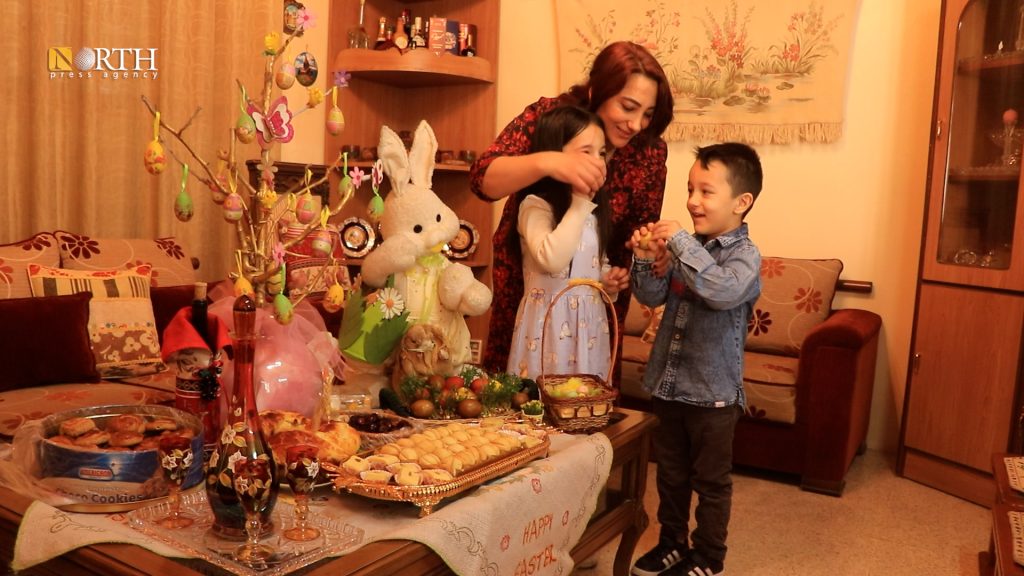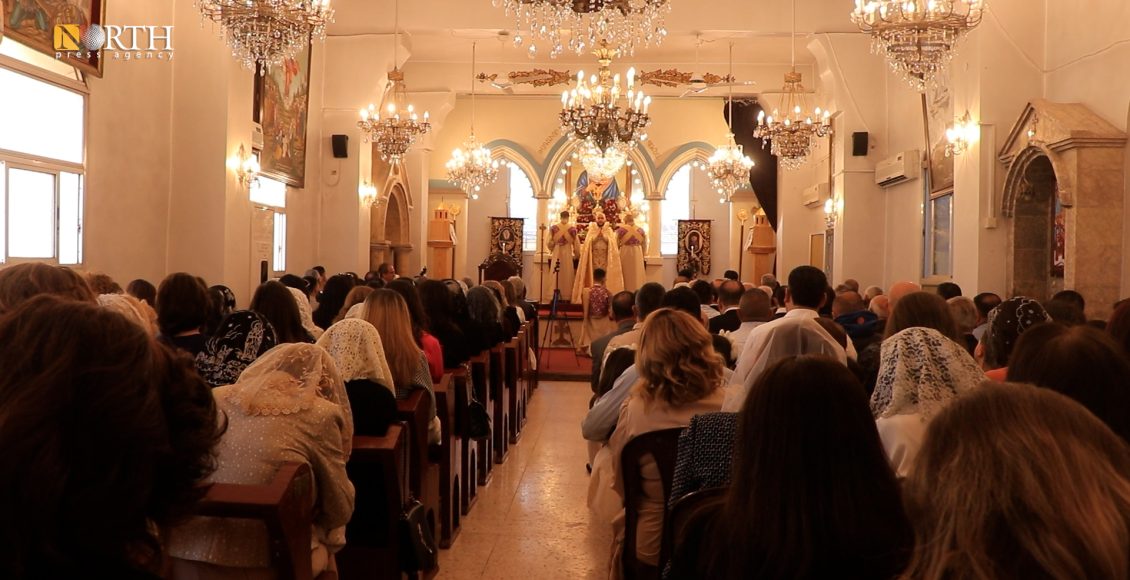Armenian woman in Syria preserves ancestral heritage, tradition
By Avin Youssef
QAMISHLI, Syria (North Press) – Despite variations in customs, Kayani Davidian, an Armenian woman who has resided in Qamishli, northeast Syria for 28 years, remains steadfast in preserving Armenian culture and heritage. She left the Republic of Armenia to marry a man from the Armenian Minasian family in Qamishli.
Like other Armenian families in Qamishli, the 47-year-old woman attends the Mass on Easter morning and participates in the holiday prayers at a church belonging to the Armenian community in the city of Qamishli.
Davidian told North Press, “Our customs in Armenia are similar to those of the Armenian community in Qamishli and other countries, although there are slight differences in some traditions.”

Religious rituals
Fasting is considered a religious ritual practiced by Christians, where they abstain from food for 50 days before Easter, known as the Great Lent, or the Great Fast. There is also the Nativity Fast that lasts for 40 days in preparation for Christmas.
On Thursday of the Holy Week, Christians participate in the Washing of the Feet and the Last Supper, which is a reenactment of Jesus washing the feet of his apostles during the last supper. On Friday, a family meal is held, bringing all family members together.
On Saturday, the fasting Christians attend the church for the Easter Vigil prayer, and afterwards, they break their fast by eating boiled eggs that are colored red.
Davidian explains that the red color of the eggs symbolizes the blood of Christ, and she makes the red dye from onion skins. She believes that it is important not to use artificial dyes to color the eggs.
Traditional dishes
Davidian talked about the tahini bread she prepares during Lent. A coin is placed inside the bread, which is then divided among family members. The person who receives the coin is considered to be the family’s blessing.
On the eve of Easter, Armenian women prepare various dishes, including fish, Mahyar (a traditional Armenian dish made of pearl wheat with yogurt), and Ajja (a type of omelette).
Davidian adds that there are differences in the types of food between Armenia and Syria. In Syria, Armenian families prepare a variety of meats for the holiday, while in Armenia, they focus on fish, which is a well-known tradition there.
On Easter, the family gathers at Davidian’s house. They exchange greetings, share a meal together, and welcome acquaintances and guests from the neighborhood.

The Armenian community prepares different kinds of dishes, cookies, drinks, and dried fruit for Easter, which are part of the cultural heritage of the Armenians in northeast Syria.
However, in families that have recently experienced a loss of life, bitter coffee is served to guests, along with sweets.
Davidian emphasized that while some aspects of these traditions may change over time, she encourages her children and others to preserve the heritage of their ancestors.
She believes that the cultural customs passed down by their predecessors should not be allowed to fade away, and it is their responsibility to pass on these traditions to future generations in order to uphold and safeguard their rich cultural heritage.

